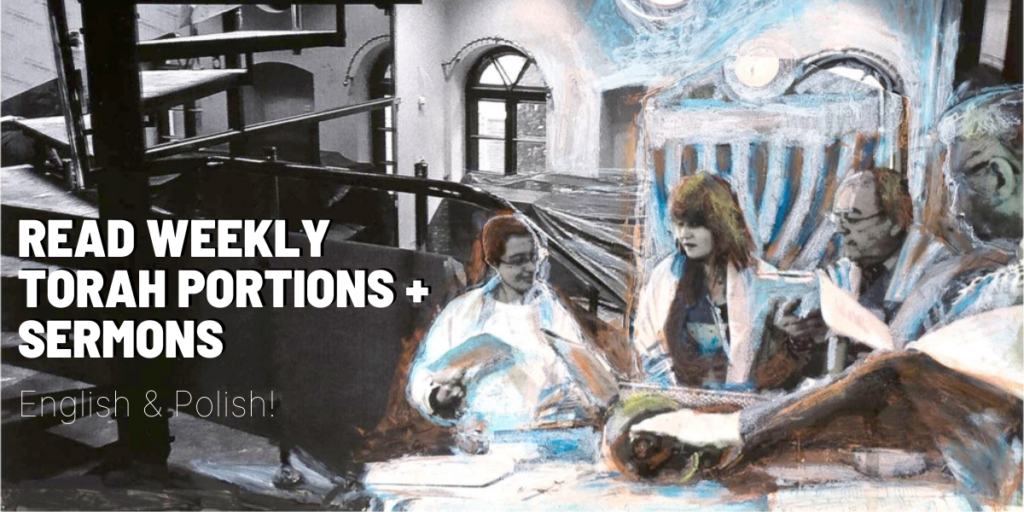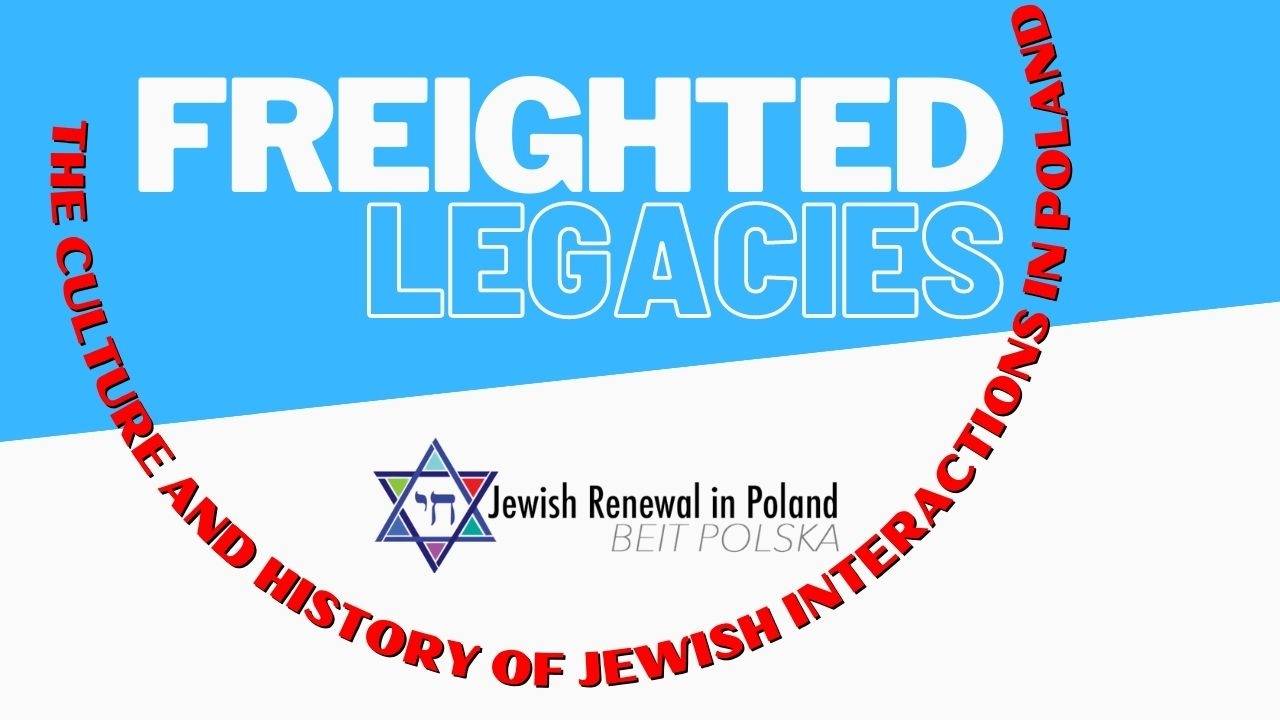By Dr Halina Postek
July 8th, 2016/2nd Tamuz 5776 A year has passed since the Israelites left Egypt. That is enough time to forget the bitterness of slavery, humiliation and persecution. This period of time was long enough for the process of the idealization of the past to begin. Now Egypt seems like a land flowing with milk and honey, and the choice to leave it seems ill-considered; the blame for this decision falls on Moses. Throughout this one year the people of Israel have rebelled against Moses two times, and twice did Moses have to rely on God’s help to maintain his leadership.
This time the situation is more serious than in the case of complaints about a monotonous diet or a lack of water. The current rebellion is headed by a man who holds the third most important position in the society. His name is Korach, the son of Izhar, grandson of Kohath and great-grandson of Levi. He is 130 years old, he is extremely affluent (a Midrash claims that he found the treasures left in Egypt by Joseph) and, because of the position he holds, he is a man of great authority: He is one of the Kohens who had the privilege of carrying the Ark of Covenant on their own shoulders. Korach is supported by the elders – in total 250 people who question the leadership of Moses. The immediate cause for this rebellion is the decision to appoint Elizaphan son of Uzziel as the head of the Kohathites dynasty, although – in Korach’s opinion – this position should have been given to him instead. A Midrash explains Korach’s behavior by citing his prophetic powers – indeed, one of Korach’s descendants will be prophet Samuel. Korach’s awareness of this fact, which makes him believe in his own impunity, is mentioned as a factor which motivated Korach’s rebellion against Moses.
On behalf of 250 rebels, but primarily speaking for himself, Korach asks Moses and Aaron: “[You] take too much upon you, seeing all the congregation are holy, every one of them, and [God] is among them; wherefore then lift [you] up yourselves above the assembly of [God]?” According to tradition, Korach asked Moses two additional questions: “If the entire tallit was woven with a blue yarn, then why do we need an additional blue thread in the tzitzit?”; “If in the Beit haMidrash there is a Torah which contains all the books, then why do we hang a mezuzah on its doorposts, since it contains only a small passage from the Torah?”. Korach’s intention is to accuse Moses of unlawfully declaring himself the leader. In Korach’s opinion Moses arbitrarily imposed certain rules of conduct (concerning the tzitzit and the mezuzah), and, by the same token, without consulting anyone he declared himself to be God’s representative. Korach has the support of 249 members of the elite. Therefore, the following question arises – why doesn’t God, when faced with Moses’ plea for help, suggest the simplest solution, why doesn’t He tell Moses: “Hold an election and show how many supporters you have, or simply let Korach take his people and leave”. Instead, God decides to annihilate Korach – in a doubly cruel way, as he is both burnt and swallowed up by the earth. Are we supposed to treat this answer given by God as a guideline: Never undermine someone’s leadership, never question someone’s authority, do not attempt to ask troublesome questions? If this was indeed the message conveyed by this Parasha, then we, as a Reform movement, would be in an awkward position – since the founders of Progressive Judaism rejected the authority of traditional Judaism and questioned some Rabbinical decrees. If in the eyes of Orthodox Judaism we are the Korachs, will we face the same fate as he did? Similar questions must have also come to mind to the founders of Chassidism – a movement which after several years of existence had been already cursed twice by the greatest Rabbinical authority of that time – the Vilna Gaon. Therefore, it shouldn’t come as a surprise that one of the most famous Chassidic leaders, Jacob Isaac Horowitz, who was called “the Seer of Lublin”, whenever he mentioned the name of Korach, he would say: “der hejlik zejde Korach” (our holy ancestor Korach). Mordekhai Yosef Leiner, another Chassidic tzadik and the founder of the Izhbits-Radzin dynasty, reminded that every year on Rosh Hashanah, before blowing the shofar, we read out Psalm 47 – one of several Psalms which according to tradition was written by Korach’s sons. Moreover, another tzadik from this dynasty, Tzadok ha-Kohen from Lublin, claimed that in the world to come Korach’s Torah will be accepted.
Therefore, in Judaism there is a place both for Moses and for Korach – this is the interpretation offered by Talmudic midrashim, this is the interpretation of Korach’s rebellion given by Chassidism. In addition, this interpretation is in line with our contemporary way of understanding Judaism – as a palette of a wide range of colors, with each of these colors fully entitled to its own place next to all the other ones.
Translated by: Marzena Szymańska-Błotnicka
Korach, albo problemy z demokracją
Dr Halina Postek
8 lipca 2016/2 tamuz 5776 Minął rok od wyjścia z Egiptu. To dosyć, by zapomnieć gorycz niewoli, upokorzenia i prześladowania. To wystarczając długi okres czasu, by zaczął się proces idealizacji przeszłości. Egipt jawi się krajem miodem i mlekiem płynącym, a jego opuszczenie nieprzemyślaną decyzją, za której podjęcie obwiniony zostaje Mojżesz. W ciągu tego roku lud Izraela dwukrotnie wystąpił przeciw Mojżeszowi; i dwukrotnie Mojżesz odwoływał się do bożej pomocy, by utrzymać przywództwo.
Tym razem sytuacja jest poważniejsza niż w przypadku narzekań na monotonne pożywienie, czy brak wody. Na czele kolejnego buntu staje trzecia osoba w społeczności – Korach, syn Izahara, wnuk Kehata, prawnuk Lewiego. Ma 130 lat, ogromne bogactwa (midrasz mówi, ze odnalazł skarb pozostawiony w Egipcie przez Józefa) i płynący z zajmowanej pozycji, autorytet: jest jednym z kohenów, mających przywilej noszenia na własnych barkach Arki Przymierza. Wokół Koracha skupia się starszyzna – razem 250 osób, podważających przywództwo Mojżesza. Bezpośrednią przyczyną buntu jest postawienie Elicafana, syna Uziela, na czele rodu Kehatydów, choć stanowisko to – zdaniem Koracha – należało się jemu. Midrasz, wyjaśniając zachowanie Koracha, uzasadnia to jego profetycznymi zdolnościami – potomkiem Koracha będzie prorok Samuel i świadomość tego faktu oraz płynące z niego przekonanie o własnej bezkarności, miała skłonić Koracha do wystąpienia przeciwko Mojżeszowi.
W imieniu 250 rebeliantów, ale przede wszystkim swoim, pyta Korach Mojżesza i Arona „Dość wam! Bo całe zgromadzenie, wszyscy są święci, i Bóg jest wśród nich, dlaczego więc wynosicie się nad społeczność Boga?” Tradycja przypisuje Korachowi dwa inne pytania skierowane do Mojżesza: „Jeśli cały talit utkany jest z niebieskiej przędzy, dlaczego potrzebna jest dodatkowa niebieska nitka w cicit?; „Jeśli w beit hamidrasz znajduje się Tora, zawierająca wszystkie księgi, po co zawieszamy mezuzę na framudze jego drzwi, skoro umieszczony w niej jest tylko niewielki fragment Tory?” Zamiarem Koracha jest oskarżenie Mojżesza o uzurpację przywództwa – tak jak arbitralnie zdecydował o przyjęciu pewnych reguł postępowania (cicit i mezuza), tak też bez konsultacji z innymi ustanowił się przedstawicielem Boga. Korach ma poparcie 249 należących do elity osób. Można więc zapytać dlaczego w odpowiedzi na prośbę Mojżesza o pomoc, Bóg nie wskazuje najprostszego rozwiązania, nie radzi Mojżeszowi – przeprowadź wybory, pokaż ilu masz zwolenników, albo – pozwól Korachowi odejść z jego ludźmi. Zamiast tego Bóg decyduje się na zgładzenie Koracha – podwójnie okrutne, bo poprzez spalenie i zasypanie ziemią. Czy ta odpowiedź Boga ma być dla nas wskazówką – nigdy nie kwestionuj przywództwa, nie podważaj autorytetów, nie próbuj zadawać kłopotliwych pytań? Jeśli taki miałby być przekaz tej parszy, to bylibyśmy jako ruch reformowany, w kłopotliwej sytuacji – twórcy judaizmu postępowego odrzucili autorytet judaizmu tradycyjnego, poddali w wątpliwość niektóre ustalenia rabiniczne. Czy jeśli jesteśmy Korachami dla judaizmu ortodoksyjnego, czeka nas los Koracha? Podobne pytania musieli sobie stawiać twórcy chasydyzmu – ruchu, który po kilkunastu latach istnienia został dwukrotnie obłożony klątwą przez największy autorytet rabiniczny tamtych czasów – Gaona Wileńskiego. Nic dziwnego, że jeden z najbardziej znanych przywódców chasydyzmu, Jakub Izaak Horowic, zwany Widzącym z Lublina, ilekroć wymieniał imię Koracha mówił „der hejlik zejde Korach” (nasz święty przodek Korach). Innych chasydzki cadyk, założyciel dynastii izbicko – radzyńskiej, Moredechaj Josef Leiner, przypominał, że rokrocznie w Rosz Haszana, przed dęciem w szofar, odczytywany jest psalm 47, jeden z kilkunastu psalmów, których autorstwo tradycja przypisuje synom Koracha, a inny cadyk tej dynastii Cadok ha – Kohen z Lublina pisał, że w świecie który nadejdzie, Tora Koracha będzie zaakceptowana.
Jest zatem w judaizmie miejsce dla Mojżesza i dla Koracha – taką wykładnię dają nam talmudyczne midrasze, taką interpretację buntu Koracha przedstawia chasydyzm, taka też interpretacja zgodna jest z naszym dzisiejszym rozumieniem tego, czym jest judaizm – wielobarwną paletą barw, w której każda ma swoje uprawnione miejsce.


















Leave a Reply